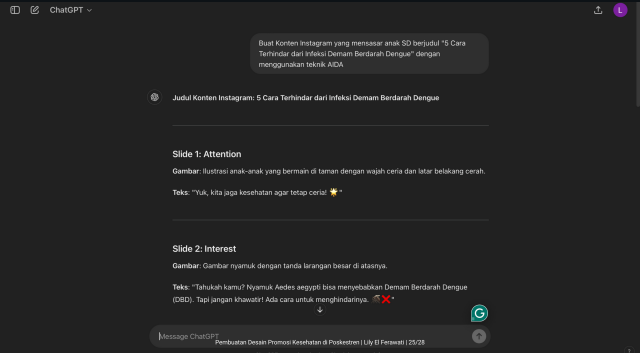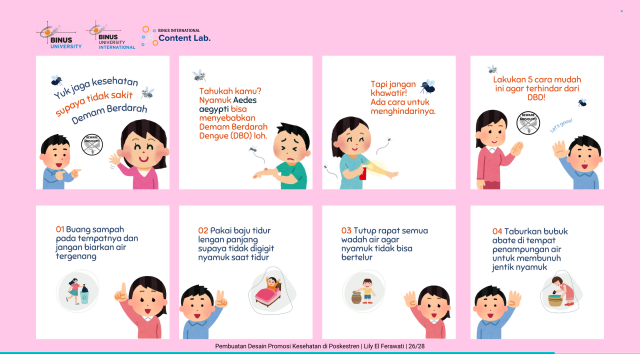A faculty member of the Communications Program, Lily El Ferawati (Ms. Lily) was invited to deliver a workshop on Designing Health Communication Messages with Poskestren and Puskesmas in the East Jakarta Health Sub-Department area today, 27 May 2024.
The training was held by Sudin Kesehatan Jakarta Timur (East Jakarta Health Sub-Department), which aimed to equip health promotion officers in Puskesmas (community health centers) and the representatives and students who manage the social media accounts for Poskestren (Pos Kesehatan Pesantren), a clinic within the area of Islamic boarding schools.
Ms. Lily introduced the participants to the types of message appeals for effective health message communication.
The four types of message appeals are:
1. Emotional appeal
Messages with emotional appeal use an approach that touches the audience’s feelings. For example, conveying the negative effects of a destructive lifestyle, like smoking, can be done by showing pictures of patients with diseases caused by smoking to ignite fear among the audience.
2. Rational appeal
Messages with rational appeal use facts, logic, and detailed information to influence audiences. For instance, communicating the negative effects of smoking is done by providing data such as the number of deaths due to smoking.
3. Interactivity appeal
Messages with interactive appeal use aspects of interactivity to attract audience interest. Conveying the negative effects of smoking by inviting the audience to discuss or fill out polls/surveys is an example of a message with interactive appeal.
4. Entertaining appeal
Messages with entertainment appeal provide humorous elements to entertain the audience. Communicating the negative effects of smoking by acting hyperbole and providing comedic effects as well as adding trendy background songs or visual effects can be a perfect example of entertaining appeal.
Communicating health messages, especially on social media requires certain strategies. Among the strategies for communicating health messages that Ms. Lily shared with the workshop participants include:
At the peak of the workshop, the participants had the chance to learn the AIDA model for persuasive communication of health messages.
AIDA stands for Attention, Interest, Desire, and Action and is a widely-known model for persuasive communication that can be applied to any content production, including health content.
Toward the end of the workshop, Ms. Lily guided the participants in utilizing artificial intelligence (AI) to generate ideas for health content by using ChatGPT with prompt writing strategies.

The participants were taught to compose the right prompt by paying attention to the channel for publishing the content, the communication goal, the target audience, the topic, and the technique for content storytelling.


AI will serve people more widely in the near future, and content creators must be aware of that. Content creators, including health content creators, should embrace the presence of AI tools to assist their work.
BINUS University is committed to providing community services by providing training, coaching, and workshops for community members to learn today’s on-demand skills. This activity serves to achieve Sustainable Development Goal #4 Quality Education, providing lifelong learning opportunities for the target community members.
... ... ...